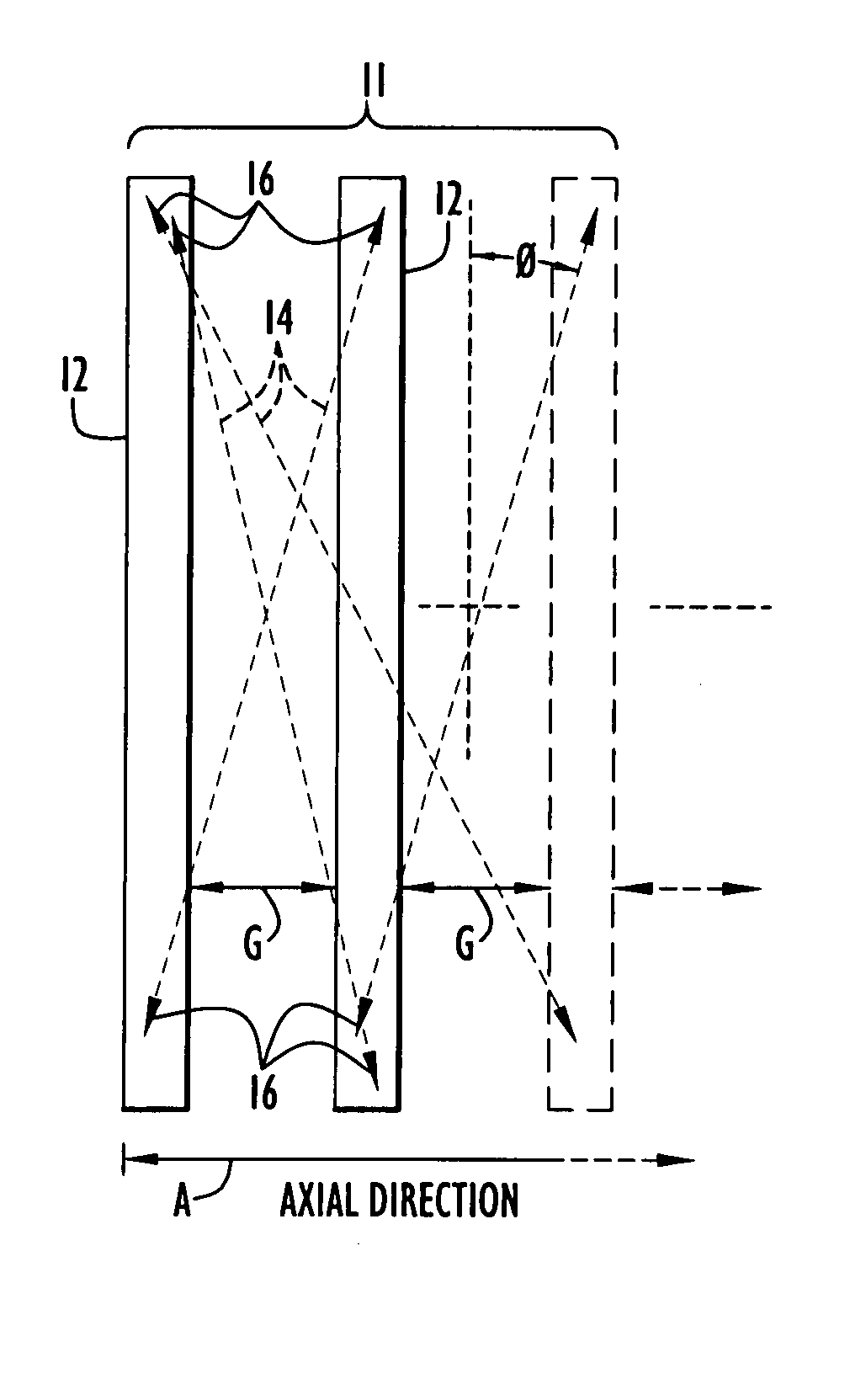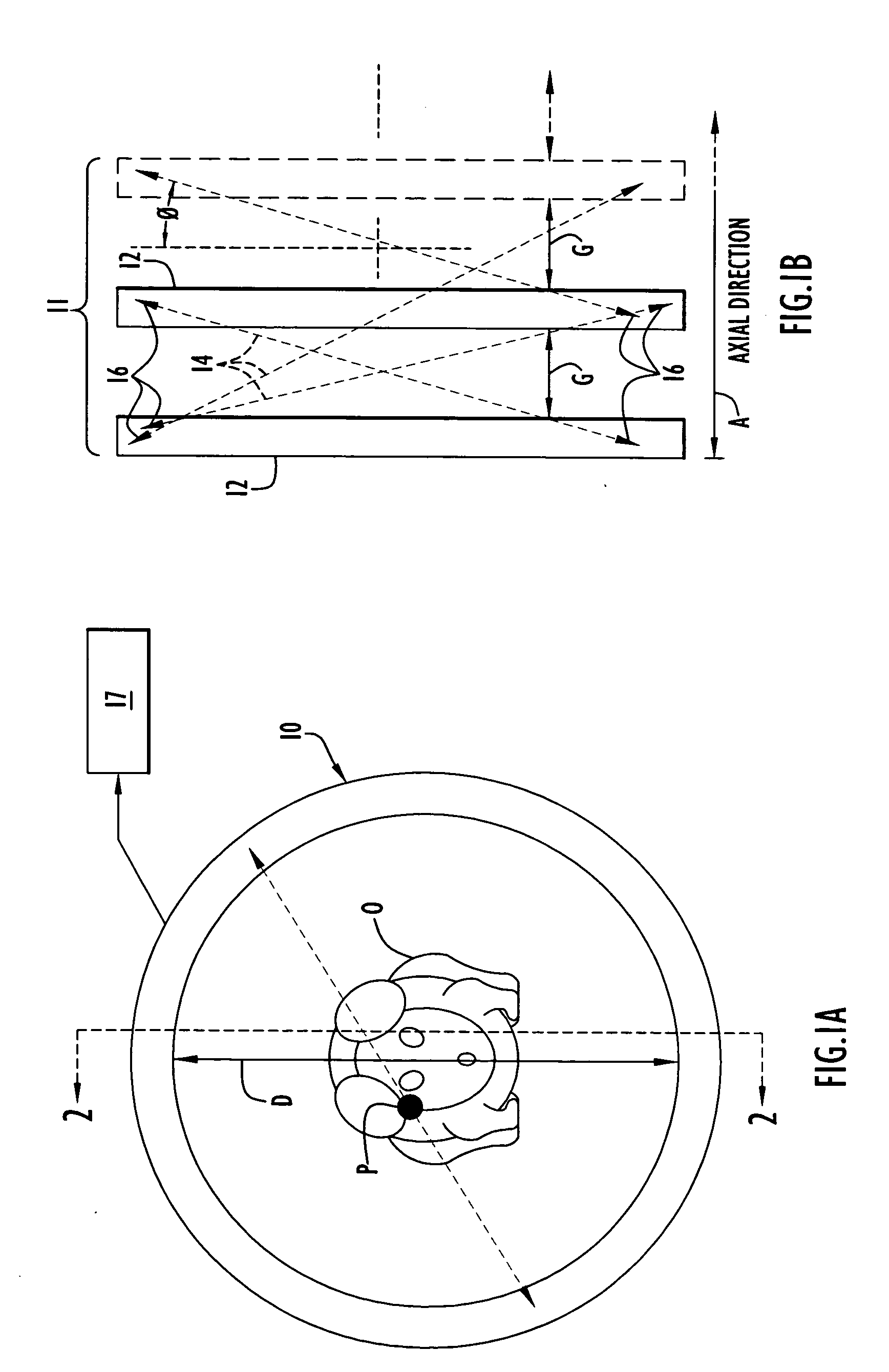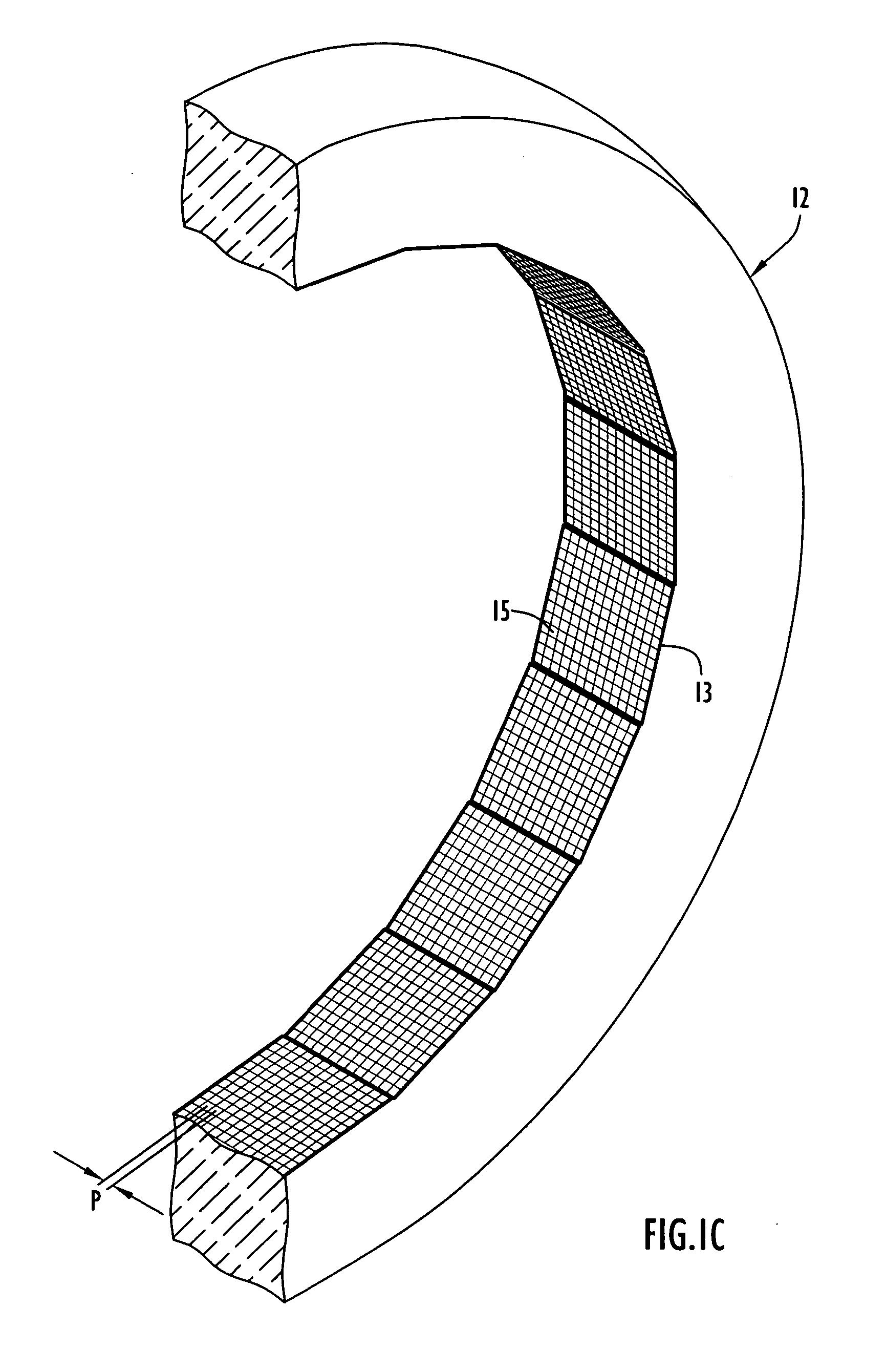Tomography scanner with axially discontinuous detector array
a detector array and tomography technology, applied in the field of tomography scanners, can solve the problems of inferior quality, i, containing artifacts or both, and prior art methods possess significant practical disadvantages
- Summary
- Abstract
- Description
- Claims
- Application Information
AI Technical Summary
Benefits of technology
Problems solved by technology
Method used
Image
Examples
Embodiment Construction
[0027] Tomography and tomographic images refer to images that together portray in three dimensions some property of an object being imaged. Commonly, such images may be in the form of a sequence of consecutive two dimensional transverse sections closely spaced along the axis of a tomography scanner to span the entire axial field-of-view of the scanner and the object therein. A “property” portray in such images can be, but it not limited to, the spatial distribution and frequency of occurrence of positron annihilation sites in the object, and a “property” may also refer to the distribution of attenuation coefficients, the location and amount of a light emitting compound distributed within the object, the amount and location of contrast material introduced into the object, and other such processes and phenomenon.
[0028] The term “detector ring” as used herein means an annular structure surrounding an imaging target or body formed of detector material that is responsive to incident rad...
PUM
 Login to View More
Login to View More Abstract
Description
Claims
Application Information
 Login to View More
Login to View More - R&D
- Intellectual Property
- Life Sciences
- Materials
- Tech Scout
- Unparalleled Data Quality
- Higher Quality Content
- 60% Fewer Hallucinations
Browse by: Latest US Patents, China's latest patents, Technical Efficacy Thesaurus, Application Domain, Technology Topic, Popular Technical Reports.
© 2025 PatSnap. All rights reserved.Legal|Privacy policy|Modern Slavery Act Transparency Statement|Sitemap|About US| Contact US: help@patsnap.com



